LubriMatic Deluxe Bearing Packer

Thank you! Your comment has been submitted successfully. You should be able to view your question/comment here within a few days.
Error submitting comment. Please try again momentarily.
- All Info
- Reviews (49)
- Q & A (0)
- Videos (1)
- Photos
LubriMatic Lubricants Sealants Adhesives - L70025
- Greasing Tools
- Bearing Packer
- LubriMatic
Grin and bear it with this Deluxe Bearing Packer! It has sturdy steel construction which makes this a valuable tool. Makes packing trailer bearings quick and easy. Optional manual function may be converted for use with power lube equipment.
Deluxe Bearing Packer
For use with either hand operated or power lube grease guns. Threaded center post for positive locking of wheel bearing. For bearings having a minimum ID of 1/2" to maximum OD of 5", height of 1/4" to 2". Rugged steel construction.
70-025 Deluxe Bearing Packer
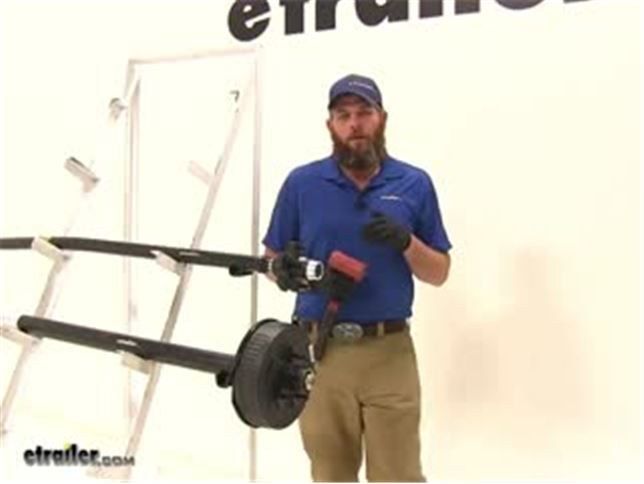

Videos are provided as a guide only. Refer to manufacturer installation instructions and specs for complete information.
Video Transcript for Trailer Bearings Races Seals and Caps Rebuild
Speaker 1: Today we're going to take you through the rebuild process on a couple of hubs. We've got an idler hub, and here we've got a hub and drum assembly. Works with electric rigs, but this can also work for just standard discs, if you've got a disc brake style setup.Basically what we're going to show you is how to get all of the bearings out. How to remove the seal. How to remove the race's if they're damaged, then get them replaced in the proper manner. We'll show you how to use an easy loop hub, which we have here.The first thing we are going to need to do is, get the grease cap off the end.
It can have either a rubber plug in it like this one does, or it can be a solid metal cap.These are pressed fit in there, basically by tapping on them on the back side. To remove them, a deadbolt hammer is typically what we're going to use. We're just going to start tapping as we go around. You'll see a little separation start right here, and slowly it'll work it's way off.Now the next step's going to vary a little bit depending on your axle setup. Do you see this is going to have a keeper that goes around the nut.
And that prevents that from being backed off, or removed. A lot of times you'll have a castle nut, which will have just little tabs that stick off, and there will be a cotter pin that passes through it. Just depending on your application, you need to get the keeper for the nut off. This style we just kind of pry out. A cotter pin you would just remove of course.Once we have that off ...
We'll start to take off the nut here, and the washer that's in behind it. Now yours should look a whole lot more dirty than this. There should be a lot of grease packed in, and through the hub, this one's brand new. We thought it'd be nice to show you the components before the grease was on .. Of our washer that comes off.And then here we're going to have our outer bearing.
Continue to pull that. We're gonig to have our inner bearing here. That sits in the backside of the hub. And we didn't put it in yet, we will show you how to put it in. But a seal would typically be covering the backside here. We'll show you how to use a seal removal tool, or another tool. To get that pried up and out. To get an access to that inner bearing.Now for a drum style like this, that process for disassembly is going to be just the same. One thing to keep in mind if you're using a disc brake setup. You'll have to remove the caliper before the disc is going to come off.Now once we have the spindle exposed, as we said this is going to be really greasy. We want to get all the grease removed, and the first thing we'll do is inspect it. We want to make sure that it looks just like what we have here. Everything's nice and smooth. We don't see any kind of discoloration, or any marring on the metal. Indicating that our bearing's got hot.If you do have any of those symptoms, at this point it's time to replace those bearings. You don't want to repack them. Get new bearings, and put in there. You might have a bearing that's come apart in here. Another surface to ensure is in good condition, is where your seal is going to go. That helps seal all the grease inside of our hub. With a damaged or broken seal, that grease is going to seep out. Either out of the hub, or in this case into our brake assembly.Now if your axle has brakes, we're also going to check the disc. Make sure it doesn't have any issues, or your hub. And this is going to be a hub and drum assembly. The brakes are going to ride on this machine surface. You're going to check that for signs of excessive heat, discoloration, or cracking. And this is our magnet surface. We'll check that surface for the same issues.Now inside the hub regardless if it's a disc brake, it's a drum brake like this. Or just a standard idler style hub. You're going to have an outer race. Would be right here, it's a small tapered piece of metal your bearing sits in, and rotates on. That's basically the outer portion of the bearing.You have the same thing here on the backside. This is called the inner race. Now if those show any signs of wear, overheating, or cracking. Those are also something we'll need to replace, which we'll show you how to do in just a minute.Now, with your brake assembly exposed, if you do have electric brakes like we have here. It's a good idea to check all the components for wear, cracking, maybe missing pieces. Check your pad thickness to make sure those are in good shape. Basically if you have a non working brake assembly and you put everything back together, you're just going to have to take it apart and do it all over again to get back to the brake assembly. This gives you a really good option to be able to change them out.And most applications are going to use a four, or maybe a five bolt flange to hold them in place. And you'll just remove the lock nuts, or sometimes you'll have a hex nut with a lock washer. You want to remove those, and then simply slide your assembly off after you cut the wiring.The friction material itself should also be checked for any kinds of cracking, or overheating. If you have any grease inside the system at all, it's likely it's gotten on those pads. It's a good idea to get those changed. Now as far as the removal of the races go, it's going to be just the same whether we're using an idler style hub like we have here. A drum brake like we have here. You can basically see where the idler is, here in the middle of the hub. It's going to go all the way around there, and we just have this extra material here to provide our braking surface.Now if you're doing a disc brake style job again, it's going to be just the same here with the races living inside of the actual hub portion. You'll just have the discs there for the brakes to make contact. We're going to use this little bit smaller one, it's a little bit easier to manage to show you how to get these out. We've talked about where the races are. The outer here, the inner being closer to the inside, but on the backside of the race there's a little lip. That lip's meant to stick out just a little bit further than the hub, and provide us an area to put our tool on, and help to drive that out.If you look all the way through there on that inner race, you'll see that little lip that sticks out just from the hub slightly, and it gives us enough area to use our tool on. Now generally to remove these you're going to use a punch, similar to this. Some guys will use a screwdriver. Or a piece of pipe. If you have a piece of pipe that's small enough to fit inside of that diameter, you can take that down through and allow it to rest on that lip.Use our punch, and then just need a hammer. And we'll start working that out. We're going to tap all the way around. Kind of equally, and evenly apply the force to get it to come on out of the bottom for us.You can see now as it starts to come out there's going to be a little gap created between the hub and the race. And we can just keep going, bringing it on out. Then you can inspect the inside of the hub surface there. Make sure no damage or anything has occurred, and repeat that same process for the outer race if you plan on removing and replacing that one.Now in the outer flat edge, you can see we're going to have our tapered edge on this side. If we roll our race over to the flat side, typically there's going to be a manufacturers part number on there. That will help you identify which race it is, that you need to go back in your system. If those are rubbed off, worn off, if you can't read them. You can measure the outside, to outside diameter of the race here. It's a good idea to use a micrometer to get it exact.Now here's your basic micrometer. And again, the outside of the race is what we're going to need to measure. You want to go . I set the thickest point there. Looks like this one's going to be about 1.98. That's going to be the measurement you'll want to supply.Now while we've got this out, let's also look at the proper way to measure our bearing. Instead of the outside for the bearing, we need to measure the inside diameter. That's going to be pretty simple. Let's pull that out, find the largest measurement we can. Which here, looks like it's going to be 1.03. With that information, we'll be able to get the correct bearing, and the correct race, so they'll fit together properly and make a full bearing kit for us.Now here's the race, we're going to show you how to get this put back in. Basically just going to press fit inside of our hubs. We need to get it down on there. Kind of like that. And you'll have a couple options. A lot of times you're going to see do it yourself or at homer, just going to use a wooden block. Just place it on there. That's going to get you started, but at that point you'll struggle in getting it to go all the way down into it's seat.Now to take care of that problem, there are several seal drivers that are available. Seal and race drivers that are available out there on the market. It's designed to fit down inside of our race, inside of our hub and get it down there where it needs to go. This is part number ptw83020, has several different sizes, even if you have multiple trailers it's going to do the job.Now the side with the angle on it, is designed to fit down inside of our race. If we use the other side, that's going to be for driving your seal into place. Just want to hold it, and take it on in with your hammer. You'll see, you just want to insure that our race is all the way up against that line on the hub where it's supposed to mate to.Now when it comes time to pack your bearings you're going to have several different ways of doing this. You can just use your hand, is the traditional method. That's going to be the method probably reserved for the very occasional trailer work kind of situation. If you do it once or twice a year, probably get away with it that way.Next you would go to a, kind of a sandwich funnel style almost. If you look inside of there, you can see the bearing. It's located between the two pieces. Just use a grease gun. Start filling that with grease, and that's going to fill our bearing for us. And the third, with this one you're just going to place your bearing down and in. It should be pretty close to center. And then we've got our cone her that's going to go down and secure that.Now I think this style, wastes a little bit more grease than what this style will. This has a dust cap. You can see, you can keep your grease in there, put your dust cap on there and save it for later use. This will be if your going to do it every couple years. And this particular style would be if you're a more regular user.Let's start by showing you how to use a bearing packer. Similar to this. Again, we've just got our grease inaudible 00:11:07 here on the top. And then just slowly start to fill it. Now I like this style quite a bit. I think even regular users might enjoy it, because you can get a really quick visual look at that bearing. You're not going to have to overdo it, or have to much grease.You can kind of see in there now, we're starting to get grease to come out of it. Couple more pumps, we'll be good. You can see we've got grease coming out all the way around. Where all of our bearings are. Got a little bit of excess there. Just take that around the outside of it. And then we should be able to lift it off. And now you can see what we we're talking about. Just a little bit of excess there, that you're just going to wind up wasting.Now we'll take our bearing, we're going to place it right down in our race. And then we'll cap off the back with our seal. Right now our seal's going to fit in just like our race did. It's going to have a little bit of a pressure fit to it. Now very often in this situation, I see people using the four by four method. Kind of here, just placing that on and tapping it. As an option though, if you do have one of these. You can see that's designed to fit right on the top of the seal. And help drive it in.The biggest thing here is, just going to be getting it driven in squarely. You can see, this side's in a little bit further than this side. I'm going to start this side first. Now since we didn't have the opportunity to show you before, we're going to take a look at pulling a seal. Now this is a seal puller, we carry this on our website part number ptw1219. This is meant to hook underneath the seal. And then you kind of pull up on it, and just like our race you'll have to work all the way around that edge. Just bringing it out a little at a time.If you don't have that available. Another option would be a screwdriver. You just kind of get that under the seal, and turn it. And see, that'll allow you to also pop that out. We've taken care of our race. Our inner bearing. Our seal. The last component, before we put our hub back in place is going to be our outer bearing. Now with this bearing, I'll show you the hand packing method.This is definitely . Slightly dirtier method than the bearing packer. When we get grease on our hand we want to look at the larger side of the bearing. This is the smaller side. We have a larger side In between the inside and outside there's a gap. We can see our rollers in there. We want to grab that, and use that gap and shove grease inside of it. Now this is going to take a little bit, you want to work in the same spot until you get the grease pushed all the way through. We can see on the top there we've got a little bit starting to come through.And once we push it in the bottom, and you see it start coming out the of the top in those little drips, it's going to indicate that, that section's fully packed. Just need to work all the way around their outside edge now and do the same thing. Alright, once that's all the way around . The bearing will be ready for use.Now one more thing I like to do. We can see our inner bearing there, and our outer bearing. Well between the two, got a pretty big gap in there. If you'll take a . Pretty good amount of grease. We're just going to go all the way around. See how we can go all the way around the inside and just line that really well. The more grease we have in here, the less chance we have of any moisture getting in there, which can cause corrosion, rust, pitting. Pretty much things we do not like when it comes to bearings, races, and hubs.Put plenty of grease in there. And then this one does have the easy lube spindle, that'll even fill it in more. Now we can get our assembly slid on. I like to keep my thumbs on that outer bearing, just to prevent it from . inaudible 00:15:28 pushed off there. Now we can put on the original hardware that we removed, in taking off our hub the first time. In our case, we had our washer and our nut.Now most commonly you'll see pliers similar to this being used. We basically want to get that tightened down. Once it's fully tightened down you'll feel some resistance in the hub. We back it off just slightly. That'll give us a little bit more freedom of motion there. Something you don't want however . Is any movement in, or out on your hub. You want to be sure that everything is compressed, and you don't have what's called end play. Which would be the play in and out.Once we've got that set, then you'll put on whatever tight keeper yours came with. Get that put back in place. Now with an easy lube style hub, you're going to place your grease gun on the end, and then you can just fill the remainder of that hub up.Now for your typical applications, you're either going to have a solid cap, or a cap that'll have a rubber plug in it. A solid cap's going to be for an axle without the grease inaudible 00:16:51 here on the end. Goes on there. Just knock it on with your rubber mallet. Same with the one with the plug. Just gives you a removable area there, be able to cap that off.We'll show you how to put that on. Now as alternatives as well, a lot of times on boat trailers and marine kind of situations. You'll see a bearing buddy. This is going to apply a little bit of pressure on the grease, you'll fill it up. This kind of comes out just a little bit. That applies constant pressure on the grease to make sure we don't have any air, or anything like that. Then there is also an oil bath hub available. Now this is going to be for use with seals that are going to be designed specifically for oil bath use. You'll have to change that seal.We're using a double lip seal. There are also single lip seals available. Of course a double lip seal is going to give you just a little additional security. Keep that in mind when you order. But let's get this knocked on there now so you can see how that works. We just want to take the cap, we're going to center it. This is going to be very similar to what we did with the seal. And then just gently start tapping it around the outside. And it'll seep down on there for you.It's really going to be the same thing that you'll do with any of the end caps. Now with this side done, it's a good idea to take care of all the other hubs. Get them all on the same maintenance schedule. And as long as you'll periodically check the grease, take your trailer out for a trip occasionally. Just to keep everything lubricated. It should extend the life of these parts, and give us years of good service.
Customer Satisfaction Score:
98% were satisfied with this product
2% of customers were not satisfied
- Defective
- Wrong item was ordered
Customer Reviews
LubriMatic Deluxe Bearing Packer - L70025
Average Customer Rating: 4.3 out of 5 stars (49 Customer Reviews)
Grin and bear it with this Deluxe Bearing Packer! It has sturdy steel construction which makes this a valuable tool. Makes packing trailer bearings quick and easy. Optional manual function may be converted for use with power lube equipment.
Good prices and good quality

Perfect replacement for my trailer. etrailer is only place I buy trailer related parts from. Always excellent service. Fastest shipping in the industry.
I've shopped etrailer over many years...great products, great prices, great service. Needed this bearing packer to really clean and repack the bearings on an aluminum trailer that goes behind my Jeep. This is well made from metal and will outlast me or my Jeep ;-))))
The complete shipment arrived on time as usual for etrailer.com. However, the label was missing the name of my business and the Owner/Proprietor of the mail service I use was not going to accept the packages for lack of a name. The box number was printed the the name section.
The Owner/ Proprietor is this very small town is the ONLY mail service we have here. So, thinks very powerful by reading every label and wielding her monopolistic power upon everyone. I pleaded with her to let me have package, and she finally agreed, if I would chew your butts for missing the name
Here in this town of [town] Montana we have named her the "Mail Nazi"!
I suggest you be conscience of proper mail labeling.
Otherwise, thank you for your consistent service and prompt customer service!
It's not very often that a product makes life so much easier and exceeds expectations like this simple but effective product. Instructions are incomplete (they basically say "put the bearing packer together with the bearings in the middle"), but eTrailer's instructions were a great supplement. First and every time I used it, grease came out evenly around the entire bearing which gives me great peace of mind that my bearings are correctly packed. Enough grease is left over after removing the bearings to spread around on the bearings after they're on the hubs. A fantastic time-saving product at a great price.
My camper that I just bought used was in dire straights. Bought new races,bearings,seal package with bearing buddies. Also bought bearing packer tool and seven piece bearing tool. What a breeze. Had all four wheels done in about an hour and a half.
Thanks etrailer. ROAD TRIP AHEAD.
Everything arrived in good order and condition. What has really impressed me with etrailer is the customer service. I received emails from real people answering my questions and keeping me up to date with my order status. I even got a phone call from the shipping person making sure they facilitated my order in the best way possible for me. Count me as being really impressed!!!! I will be ordering all of my trailering supplies from your company in the future. I wish more companies ran this way. Great experience!

The concept is good but I had difficulty getting the grease to penetrate the bearings without coming out from under the top and bottom plates
I bought this and figured I'd give it a try. If you don't have the bearing sitting perfect the grease seems to miss its target. I ended up packing my bearings by hand the ole fashion way. It might be good if you have to do a bunch.
Not a fan of this style packer after giving it a try. Inevitably my bearing was a bit off center which meant it sent more grease out one side. I picked up a hand press packer that I think works much better, can use bulk grease, and has less grease waste.
The first time I tried to use this bearing packer I wasn't sure if it was working or not. I was using a 3oz. grease gun to load it and never saw grease coming out of the bearing. I took it apart and there was just a big blob of grease on the inside ring of the bearing. I just used that grease to pack the bearing by hand. The next day I watched the video on it and saw that a 14oz. grease gun was being used. I had put it together properly, but apparently needed to use more grease. I'll try it again when I feel like wasting some more grease.
never used one before watched the video,ordered it and it does work just as the video says,was inpressed ,put new bearings in my boat trailer and this packing tool did do the job well i rate it as high as i can go ,
Etrailer fulfilled this order in a very timely way and the product works as advertised. I continue to look to Etrailer for all my trailering and RV maintenance products.
LOVE this product. I packed my bearings for the first time so I wanted to make sure I had the right tools. This product worked great!! I had no issues at all and all 8 bearings were packed perfect after using this tool. Love you guys and your great videos!!
Threads on bottom assembly was a little messed up but got it working. Pushed grease great through the bearings not wasting grease by hand packing.
The hole in the stud was not drilled all the way through. I had to drill it and take time to clean out all metal shards before completing work. Disappointed that it was not made in USA. I could have bought this at local TSC five dollars cheaper. I purchased it through Etrailer because I thought it would be better quality. My mistake!!
This should take most of the mess out of packing the bearings with the Zerk fitting. Haven't used yet but looks like a boon for the job.
Very easy to order, tracking system is superior. Shipment and delivery were very fast, with product extremely well packaged. Superior purchase experience.
Works as advertised. Small investiment in this tool pays back with making it much easier to pack bearings with grease.
This item broke after the second time it was used. The nipple broke off rather than detach from the grease gun.
This product saved you from packing the bearings by hand in your palm and works as advertised. Would recommend
this bearing packer is great. it makes a nasty job easy.
simple design .
good job
For an amateur like me this make packing bearings a snap. Thank you eTrailer.
Easy to use but did not seem to get the grease into the bearing rollers as well as I would have expected.
Product arrived very quickly, in perfect condition, was fairly priced.
I'm very satisfied with etrailer.
See what our Experts say about this LubriMatic Lubricants Sealants Adhesives
- Needing Wheel Bearing Kits for Lippert 5,200 Lbs AxlesWe carry two different wheel bearing kits for 5,200 Lbs axles. The difference between the two set is in the inside diameter of the grease seals. One kit, # BK3-300, uses a grease seal the measures 2-1/4 inches I.D. The other kit, # BK3-310, has a seal the measures 2-1/8 inches I.D. You will need to measure your current seals to see which kit will work for your application. Both kits will include bearings, seal, and race cups. One kit per wheel. I also recommend LubriMatic Bearing Packer,...
view full answer... - 2,200 lb Axle Measuring 72 Inches Between Hub Face, Brake Flange, Hub, and Electric BrakesWe do have all the parts you need, though the axles with that size don't come with the brake flange mounted, so you will need to have them welded on. Also, there isn't a hub with a 5 on 4-1/2" bolt pattern that will fit this spindle though, only a 4 on 4" bolt pattern. So for the 2,200 lb axle that measures 72" hub face to hub face & spring seat to spring seat, brake mounting flange, hubs, and electric brakes, these are the exact parts you need. - Dexter Trailer Idler Axle Beam with EZ-Lube...
view full answer... - Can Air Powered Grease Gun Be Used to Grease Hub on EZ Lube SpindleAs long as you don't over fill the hubs with grease you can use an air-powered grease gun. If you put too much grease in a hub you'll blow out the seal on the back side of the hubs so you have be careful not to do that. You should slowly pump grease into the spindle. As you are pumping the grease into the spindle, occasionally rotate the hub. This will prevent the grease from building up in one spot. Continue to pump grease until you begin to see the outer bearing move or you see grease...
view full answer... - Availability of 10 inch Self-Adjusting BrakesI have found a set of brake assemblies for your Lippert axle. The etrailer Electric Trailer Brake Kit, # AKEBRK-35-SA, are both left and right brake assemblies. These assemblies are self-adjusting that only require an initial set-up at installation. Once installed, the brakes will self-adjust as part of the assemblies normal operation. The brake assemblies are 10 inches x 2-1/4 inches. I also recommend using # L11465 Wheel Bearing Grease, # L70025 Deluxe Bearing Packer, and, if needed,...
view full answer... - Parts Needed to Add Brakes to Lippert 3500lb Axle on an Utility TrailerWe have the parts that you will need to add brakes to you Lippert 3,500lbs axles. For the brake assemblies, I recommend the Electric Trailer Brake Kit, # AKEBRK-35-SA. This kit includes both the left and right brake assemblies and will bolt right to your 4 hole brake flange that is already on your axle. The brakes are self-adjustable and will only need an initial set-up at installation. The drums that you will most likely need will be # AKHD-545-35-K. This drum will include bearings,...
view full answer... - Bearings and Seals for L44649 and Spindle Seal Diameter of 1.24 InchesWe have all the parts you need, though you'll have to order them individually as there isn't a full kit: - Replacement Trailer Hub Bearing # L44649 - Replacement Race # L44610 - Double Lip Grease Seal # 34823 - Bearing Buddy Bearing Protectors # BB1980A For grease I recommend the Prime Guard Wheel Bearing Hi-Temp Red Grease # L11380, and for a bearing packer I recommend the Bearing Packer # L70025 or # ALL647646.
view full answer... - Recommended Hub And Drum Assembly For Dexter 5200 lb AxlesThe self adjusting brakes need an initial adjustment when you install them and then the self-adjusting will kick in. If you have already done the initial adjustment, the 5 mile trip should allow your brakes to work properly. If the brakes are not working properly, it may be a sign that your drums assemblies are worn down or it may just mean you need to adjust your electric brake controller settings. If you want to ensure you have working bearings, seals, and hubs, I recommend the Trailer...
view full answer... - Needing Brakes, Hubs, Bearings and Seals for a set of AL-KO Axles with 10 X 2-1/4 Inch BrakesThe brake assemblies that I recommend to replace your AL-KO brakes are # AKEBRK-35R and # AKEBRK-35L. Theses are the brake assemblies for both the left and right sides of the axle. I like these brake assemblies over the others we carry for two reasons, the shoe pads are machined rather than clipped and the magnets on theses brakes are thicker. The machined shoe pad will wear better and are sturdier than the clipped end shoe pad. The thicker magnet will wear better and in turn last longer...
view full answer... - Do Hubs Need to Be Removed to Re-Pack Bearings on EZ-Lube AxleWith an EZ-Lube axle you do not have to take off the hubs to re-pack the bearings. You can use grease like # L11390 along with a grease gun # L30200 to add new grease and push the old grease out. However, it is best to pull the hubs and manually inspect your bearings at least once a year to make sure they are in good shape. When you pull them for inspection you will want to re-pack them by hand or use a bearing packer # L70025 prior to installing them again.
view full answer... - Recommended Grease for Repacking Bearings on CE Smith Trailer Hub Assembly # CE13100I spoke with my contact at CE Smith regarding the Trailer Hub Assembly # CE13100 that you reference. She stated that they use an NLGI # 2 red grease like the LubriMatic LMX Industrial Strength Grease # L11390. This will be compatible with the grease currently in the hub, but I do still recommend removing as much grease from the hubs as you can when repacking, as it's possible that the old grease may be contaminated from moisture. I have attached a great article on repacking trailer bearings...
view full answer... - Will etrailer Idler Hub Assembly AKIHUB-440-2-1K Work With Wheels That Have 2.75 Inch Pilot HoleI went to our warehouse and pulled one of the Idler Hub Assembly, part # AKIHUB-440-2-1K. I measured the outside of the hub that your wheel slips over. It measures 2.475 inches. That would give you enough room to use your wheels with 2.75 pilot holes. This hub includes the bearings races, and seal and is designed for 2,000-lb axles. To make the task of packing the bearings with grease much easier I recommend the LubriMatic Deluxe Bearing Packer, part # L70025. I recommend LubriMatic...
view full answer... - The Only Way to Determine Correct Replacement BearingsWhile I understand it isn't very fun, the only way to determine the correct bearings is to take apart your hub. You will either be able to see the bearing numbers directly on the bearings when you wipe away the grease, or you will need to use digital caliper and measure your spindle to the thousandths of an inch where the bearing rides on the spindle. I have added a link to our selection of bearings for you to come back to, and when packing them you will want to use Prime Guard Wheel Bearing...
view full answer... - Should Bearings Be Replaced When a New Axle Is InstalledIf your bearings are in good shape no, you don't need to replace your bearings with your new axle. A good rule of thumb is to replace your bearings every 12,000 miles or every 12 months, whichever comes first. Since you don't use the trailer that often you should be fine, but considering the age I'd probably just replace them.
view full answer... - Complete Electric Brake Installation for 2,000 lb Trailer AxleWith the axle measurement and the bearing number, I can confirm that you have 2,000 lb capacity axles on your trailers. You will want to get the Brake Mounting Flange, # 4-34, to weld onto each side of each axle. With that flange in place, you will want to mount the 7 inch Electric Trailer Brake Assembly # AKEBRK-2L on the left side of the axle and the # AKEBRK-2R on the right side of the axle. These are nearly identical parts, but installing on the correct side is very important....
view full answer... - Compatibility of the Kodiak Disc Brake Kit on a 2006 Tidewater Single Axle Boat TrailerBefore you can decide on installing the Kodiak Disc Brake Kit, # K2HR35DS, you will need to find the spindle size on your trailer's axle. Knowing the size of the spindle surfaces or the bearing numbers that are currently installed will make sure you receive the correct bearing sizes for the disc brake hubs. The attached picture shows were the bearing numbers are located and what measurements are needed to find the correct fit. Also, knowing what bolt pattern you have for your current...
view full answer... - Recommended Replacement Axle for a Dexter 5,200 lbs AxleYes, the Timbren Axle-Less Trailer Suspension System item # ASR5200S04 would be a great option to replace a Dexter 5,200 lbs axle. These have an identical capacity and work with the 12" Dexter hubs like item # AKHD-655-6-EZ-K. The inner bearing is item # 25580 and outer bearing item # LM67048. The Timbren Axle-Less Trailer Suspension System item # ASR5200S04 weighs 251 lbs combined and can be used on both single axle and tandem axle trailers. I have linked a review video below. I recommend...
view full answer... - Are Bearings Already Packed With Grease?The Trailer Hub Bearings, # L44649, that come with the Trailer Hub Assembly, # 8-258-5UC1, are not packed with grease, you would need to do so at the time of installation. To help ease the process of using red grease such as # L11390, I recommend the LubriMatic Deluxe Bearing Packer, # L70025.
view full answer... - Should New Trailer Hub Be Hard to Turn by HandTrailer grease can be pretty thick and might make the hub slightly heavier feeling when turning by hand, but if your hub is difficult to turn by hand you most likely have the spindle nut tightened down too far. When our installers replace a trailer hub, there isn't a set torque spec used when tightening the spindle nut. The hub is placed on the spindle, making sure the inner and outer bearings are correctly seated. The spindle nut is then run down until you start feeling resistance. At...
view full answer... - Replacement Hub for Boat Trailer with 5-on-4-1/2-Inch Bolt PatternIn order to select a correct replacement hub for your boat trailer you will need to locate the bearing numbers from both the inner and outer bearings and seal, or take a precise measurement with a precision digital caliper to the nearest thousandth of an inch (such as 1.225-inches for example). Bearing numbers are the better option since they eliminate any potential for measurement error and will save you the cost of a digital caliper. The photo linked for you shows the typical appearance...
view full answer... - How to Grease an Axle with EZ Lube SpindlesThere is no outer seal with the hubs of the Dexter Trailer Idler Axle w/ Idler Hubs # 20440I-EZ-60. Just an inner seal. Permatex is not required or recommended so I would not worry about that. Here's how to grease everything upon initial installation. First, grease your bearings and spindle by hand or with a bearing packer like part # L70025. If you are going to do it by hand, start with a gob of grease in your palm and then press the bearing into the grease with some force. Next, insert...
view full answer... - Bearing Kit for Snowmobile Trailer with L44649 Inner and Outer BearingsIt sounds like the bearing you pulled is actually an L44649 which is the inner and outer for 84 spindles which are straight spindles. These are usually found on lower capacity trailers so it makes sense on a snowmobile trailer. For a bearing kit I recommend # BK1-150 because it comes with both bearings, a seal, cotter pin, and EZ lube spindle washer. You may not need all of the parts but you never know! Since packing bearings on the side of the road would totally suck, why not make it...
view full answer... - Needing Bearing and Seal Replacement for Lippert AxleI found a bearing and seals that will fit your Lippert Axles. According to the manufacturer on the 5,200 lbs axles, the outer bearing number is # LM67048, the inner bearing is # 25580 and the grease seal will be 10-36, # RG06-070. Now, before you order your parts, you will need to remove the wheel and hubs to inspect the bearings to see if the bearing numbers are match to the ones listed above. If they match then you will need # BK3-300. This is a bearing kit that will include both inner...
view full answer... - Is it Necessary to Grease the Hubs on a G-45 TipperIf is has wheels and bearings then it's going to need grease (or oil if it is an oil bath hub). I have included a link to a video that shows how to pack bearings with grease by hand. We also have a tool that can be used, # L70025, that you can use with a grease gun, # L30100, to limit the mess. Also, you have to make sure that the grease used is compatible with the grease still on the bearings and in the hub. If you are not sure then you will need to completely remove the old grease before...
view full answer... - When Should Trailer Wheel Bearings be ReplacedWe recommended to repack the wheel bearings on your trailer every 12 months or 12,000 miles. There is not a specific guideline as far as actually replacing the bearings. When repacking them with grease, you will also just want to check for any damage or wear and replace anything if needed. As long as everything looks fine, there is no need to replace the bearings based on time alone. If you will be packing the bearings by hand, I recommend using a grease like the Prime Guard Wheel Bearing...
view full answer...
Do you have a question about this Lubricants Sealants Adhesive?
Info for this part was:


At etrailer.com we provide the best information available about the products we sell. We take the quality of our information seriously so that you can get the right part the first time. Let us know if anything is missing or if you have any questions.
























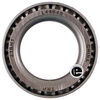




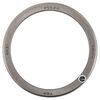

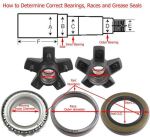
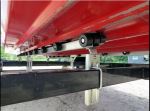


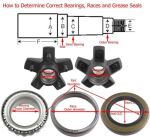

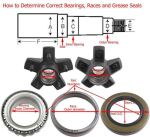
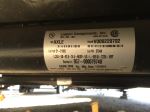
Joe
11/11/2018
just fine, does what its supposed to do and not break doing it.